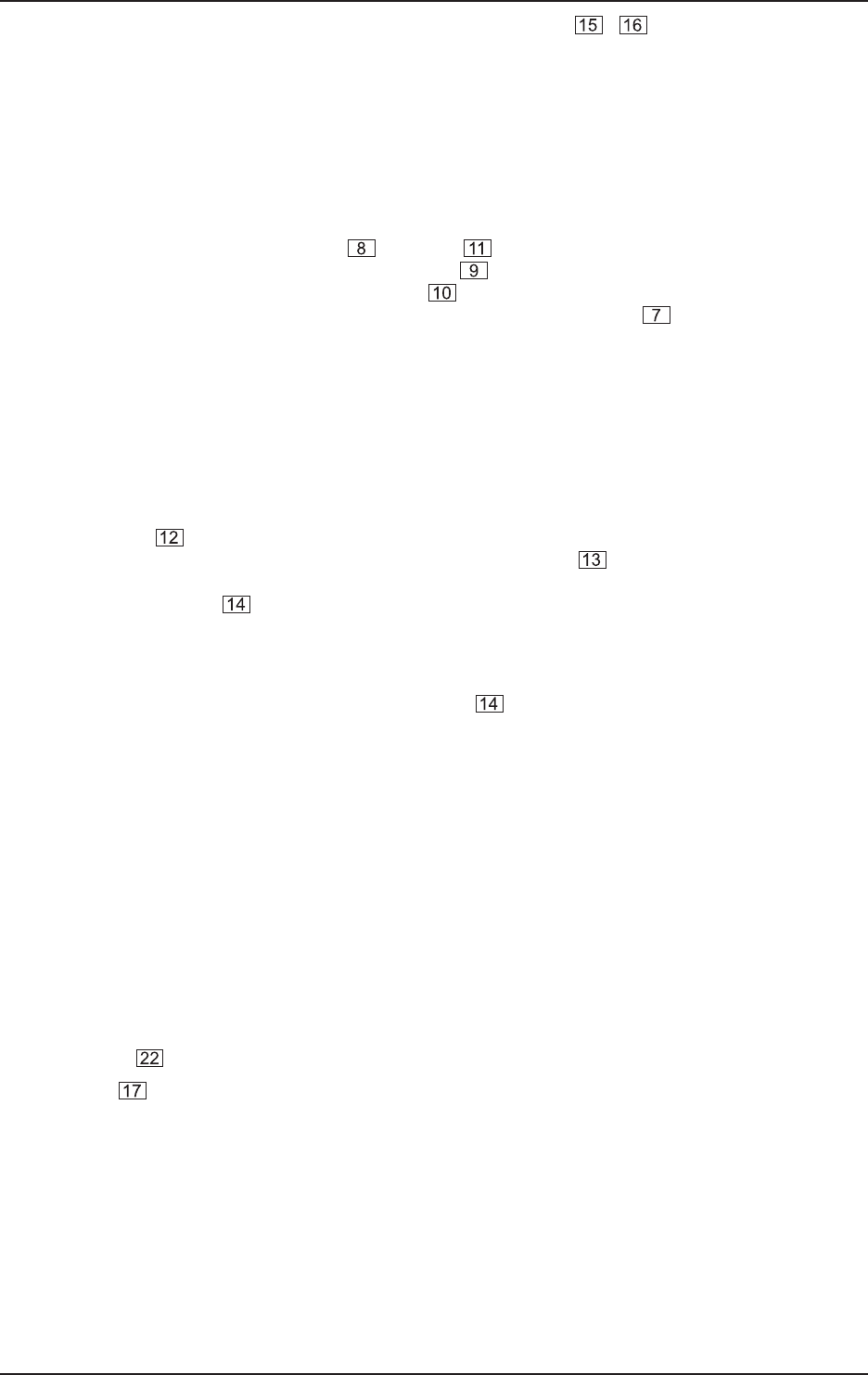
10
EURODESK MX3282A
In addition to switchable Solo/PFL metering, a couple of channel LEDs ( / ) illuminate when a signal is
present (-20 dB), or if a channel is going into overload. These LEDs are particularly useful when using extreme
EQ settings, or adding a dynamics processor via an insert.
You do not want the overload light to come on except very intermittently during a take or a mix. If it does light
persistently, reduce input gain (see also the essential section 8: SETTING UP).
3.2 Equalizer
All mono input channels are fitted with a semi-parametric 3-band EQ, plus a switchable low-cut filter for
eliminating unwanted subsonics. The upper and lower shelving controls have their frequencies fixed at
12 kHz and 80 Hz respectively. The midrange control is semi-parametric with a peaking response,
Q fixed at 2 octaves, sweepable from 100 Hz - 8 kHz ( ). All three bands have up to 15 dB of cut and boost,
with a center detent for off. Thirdly, there is a steep high pass (low-cut) filter , slope @ 18 dB/oct, for
reducing floor rumble, breath noise and popping, woolly bottom end etc.
+ The combination of shelf boost at 80 Hz together with low-cut at 75 Hz results in a peaking
response, useful for adding warmth to vocals and instruments, and a firm bottom to kick drums
and basses, without losing control of low frequency speaker cones.
3.3 Aux Sends
All eight aux sends are mono and post-EQ. Aux sends 1 & 2 are fixed to be pre-fader for cueing purposes,
while 3 & 4 are fixed post-fader for sending to effects etc. A SHIFT switch toggles the third pair of aux send
potentiometers between two bus pairs (5 & 6 or 7 & 8). These four aux sends are switchable pre/post-fader en
bloc using the PRE switch .
For almost all FX send purposes, you will want aux sends to be post-fader, so that when a fader level is
adjusted, any reverb send from that channel follows the fader. Otherwise, when the fader is pulled down, the
reverb from that channel would still be audible. For cueing purposes, aux sends will usually be set pre-fader,
i.e. independent of the channel fader (depress PRE switch for aux sends 5/6/7/8).
+ Most reverbs etc. internally sum up the left and right inputs. The very few that do not may be
driven in true stereo by using 2 aux sends.
There is +15 dB of gain on every aux send. Such a high boost is usually only appropriate where the channel
fader is set around -15 dB or lower. Here, an almost exclusively wet signal will be heard. In most consoles,
such a wet mix requires the use of a pre setting for the channel aux send, losing fader control. With the
EURODESK you can have a virtually wet mix with fader control.
Channels may be altered for pre-EQ aux sends (see section 13: MODIFICATIONS).
3.4 Routing & Muting
Routing means selecting which bus you want a channel to address. There are five stereo buses in the
EURODESK MX3282A (plus a stereo solo bus). Main mix and the four subgroup pairs are selected by five
assign switches . Solo/PFL we encountered in the section on input level setting (3.1).
Channel PAN positions the output of the channel in the stereo field. Its constant-power design ensures
there are no level discrepancies whether a signal is hard-panned, center-stage, or somewhere in-between.
Such pin-point accuracy will be a revelation if you have been working on consoles with lower quality circuits.
All stereo buses follow channel PAN. Usually, only one of L-R, 1-2, 3-4 etc. will be selected for a particular
channel.
+ An exception to this rule is when laying down voice takes. It is often convenient to have the
mic channel(s) routed to all potential take tracks simultaneously, since you are often dropping
in quickly between four or more tracks. It means one less button to press each time you switch
tracks.
3. MONO INPUT CHANNELS


















